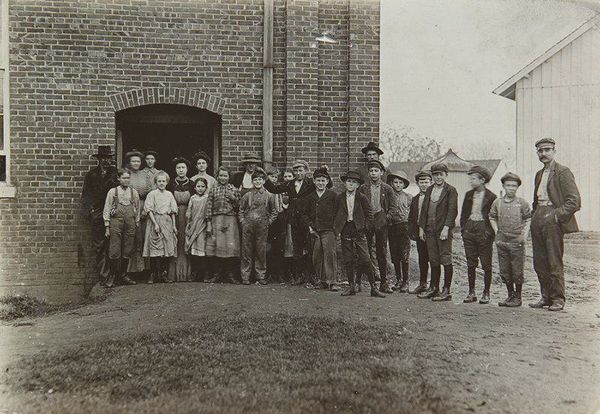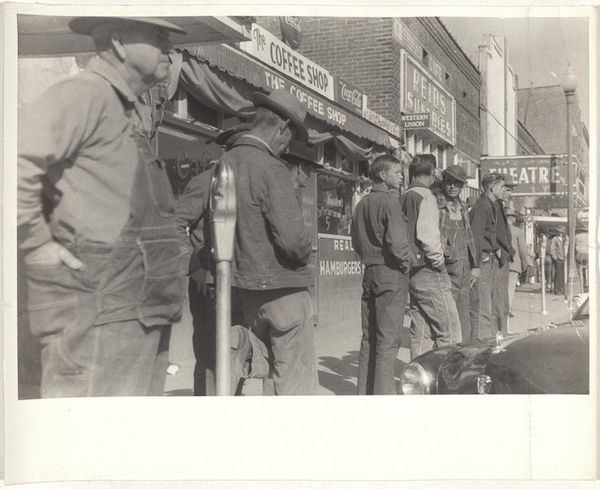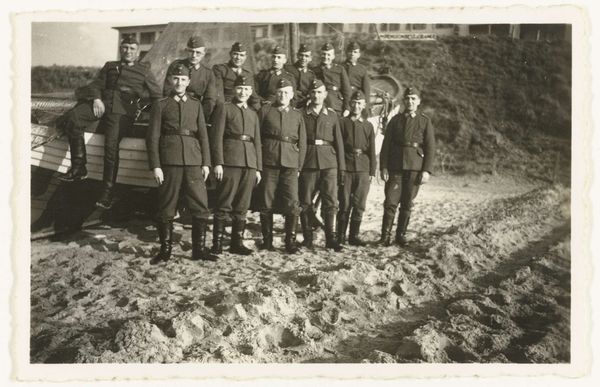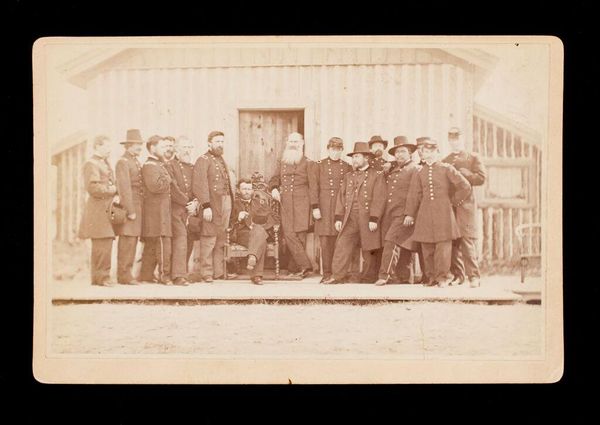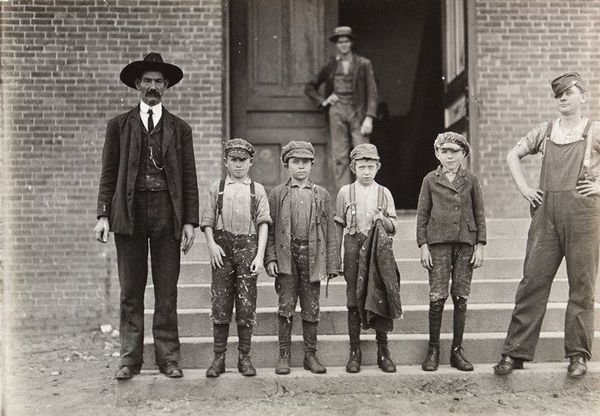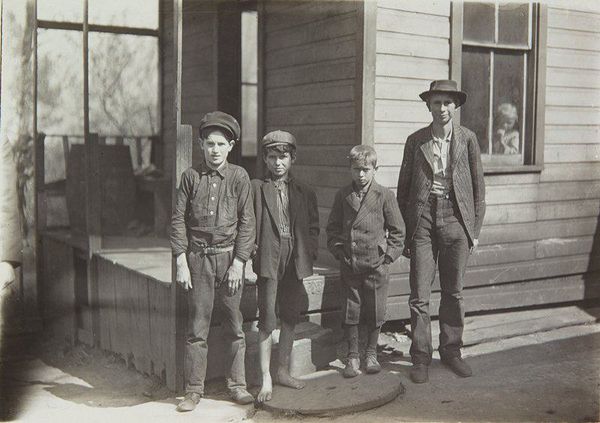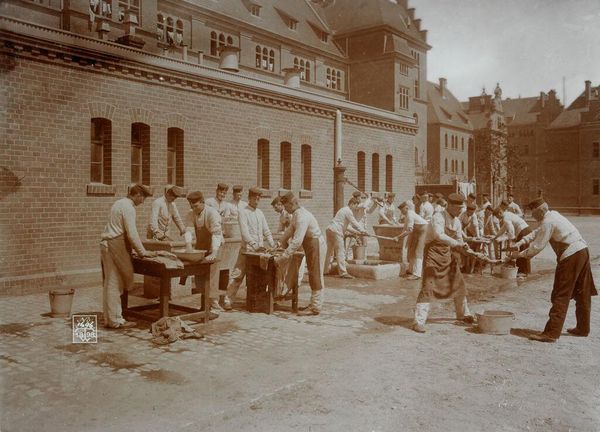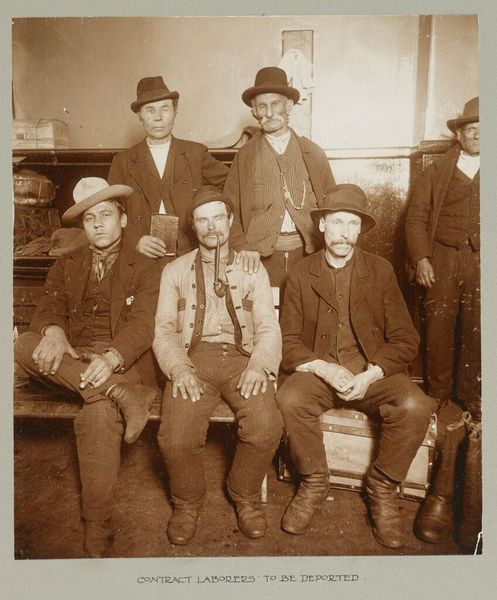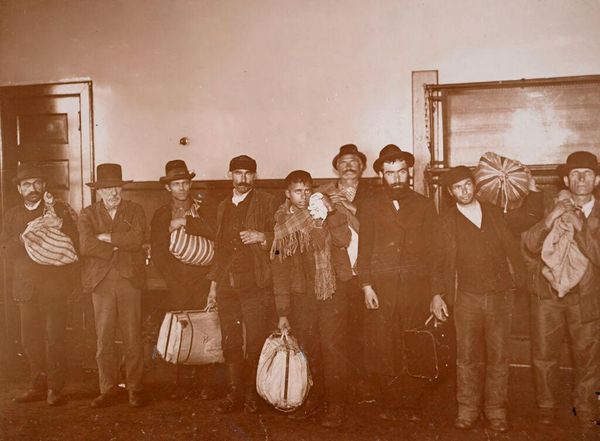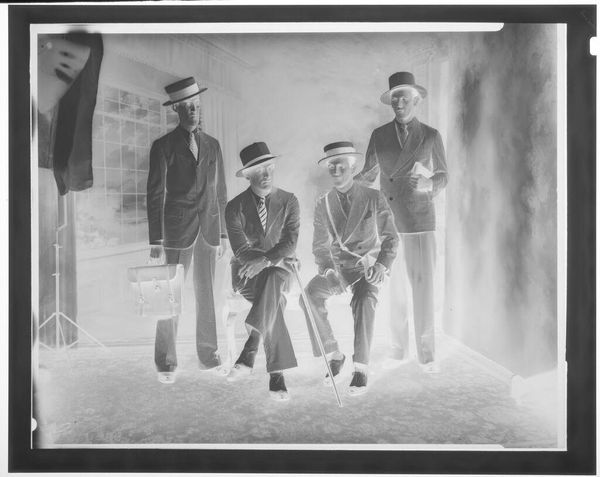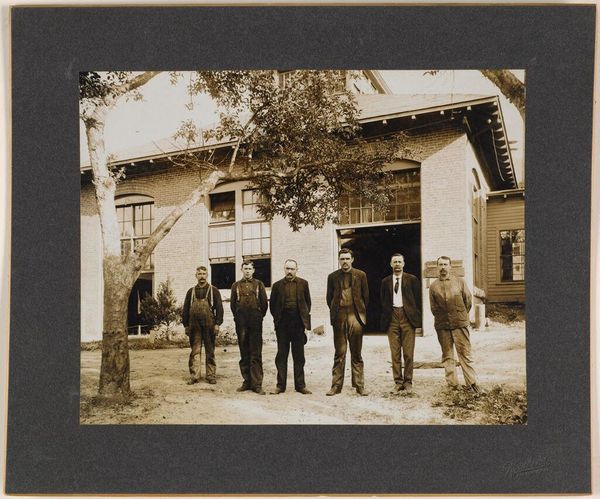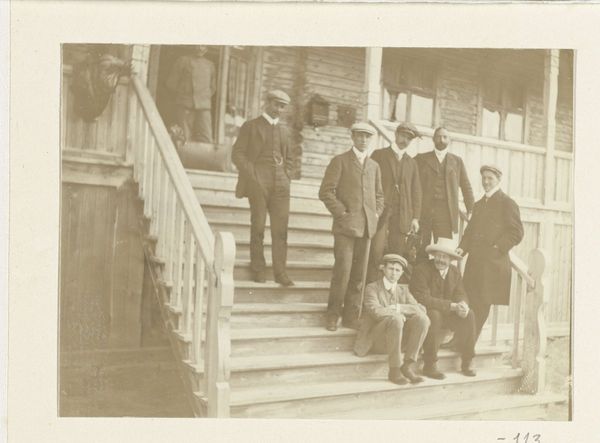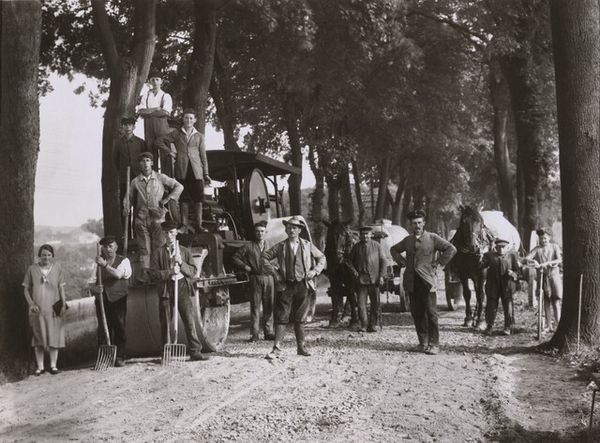
Smallest Boy is Joseph Fortin. His Mother (at Home) Said He is 14 Years Old. He Does Not Look It. 6 A.M. Group Going into Mill N. 6. 1. Cocheco Mfg. Co. Dover, N.H. 1909
0:00
0:00
photography, gelatin-silver-print
#
portrait
#
black and white photography
#
social-realism
#
photography
#
black and white
#
gelatin-silver-print
#
monochrome photography
#
monochrome
#
monochrome
Copyright: Public domain
Editor: Here we have a gelatin-silver print by Lewis Hine from 1909, titled "Smallest Boy is Joseph Fortin. His Mother (at Home) Said He is 14 Years Old. He Does Not Look It. 6 A.M. Group Going into Mill N. 6. 1. Cocheco Mfg. Co. Dover, N.H." I'm struck by how…small everyone looks, and the overall somber mood of the photograph. What do you see in it? Curator: Ah, Hine. He captured something devastating, didn't he? Beyond the obvious commentary on child labor, I see resilience, perhaps defiance, in their eyes. Notice how they're posed. Not quite head-on, a slight angling. Like they're assessing us as much as we're assessing them. It’s almost like they’re silently asking "What are *you* going to do about it?" Do you feel that, too? Editor: Definitely, it's unnerving. Their expressions are so direct. Knowing that Hine was using photography for social reform… Curator: Exactly. It wasn't just about documentation; it was a call to action. He’s making us complicit, urging us to face this reality. And that single line title! What an interesting choice of words, like an oral history record, which personalises one amongst the many unnamed children. It makes you wonder about Joseph Fortin’s fate, doesn't it? Editor: It really does. So, is the emotional impact as important as the factual record here? Curator: For me, it is more so, to be honest. It lingers. We see the fact of child labour throughout history, but these gazes transcend that. It becomes a deeply felt experience of looking at innocence robbed. So, more than "important," I would argue it becomes integral, the vehicle for his reformist mission. A painful, crucial beauty, wouldn't you say? Editor: I think I understand that better now. It’s not just a historical document, it's a human cry. Curator: Precisely. Hine was more than just a photographer, he was a voice, a conscience… still whispering to us today.
Comments
No comments
Be the first to comment and join the conversation on the ultimate creative platform.
